Household clogged drains can quickly bring daily life to a standstill. Kitchen sinks filled with standing water, backed up bathtub drains, and toilets that fail to flush all cause major inconveniences.
When simple plunging fails to clear the blockage, many homeowners reach for chemical drain cleaners like Liquid-Plumr and Drano. These caustic products promise to dissolve even the toughest clogs quickly.
But how do you decide whether to use Liquid-Plumr or Drano? Is one drain cleaner actually better than the other?
This comprehensive guide will examine Liquid-Plumr and Drano head-to-head. We’ll compare their ingredients, effectiveness, costs, safety precautions, environmental impact, ease of use, and real customer reviews.
Read on to learn which of these two popular drain cleaners offers the best bang for your buck while still getting your pipes squeaky clean.
A Brief Comparison Table
| Aspects | Liquid-Plumr | Drano |
| Active Ingredients | Sodium hydroxide, aluminum | Sodium hydroxide, aluminum, sodium hypochlorite (bleach) |
| Unclogging Power | Highly caustic formula, remains active longer | Comparable unclogging power but loses potency faster |
| Safety | Highly corrosive, requires gloves and ventilation | Highly corrosive, requires gloves and ventilation |
| Environmental Impact | Not eco-friendly, high sodium hydroxide content | Not eco-friendly, contains bleach |
| Cost | $4-$15 per bottle based on formula | $4-$15 per bottle based on formula |
| Ease of Use | Straightforward liquid only | Variety of applicators like gel and foam |
| Speed | Works in 10 minutes | Works in 15 minutes |
| Smell | Very strong fumes | Very strong fumes |
Liquid-Plumr Overview
Liquid-Plumr is manufactured by Clorox and first hit the markets in the 1950s. The active ingredients in Liquid-Plumr are sodium hydroxide and sodium hypochlorite.
Sodium hydroxide is a caustic compound also known as lye or caustic soda. It works by reacting with the organic materials like food waste, fats, oils, and hair that are clogging pipes. The reaction generates heat and saponifies fats into soap, which further liquefies the clog.
Sodium hypochlorite is the compound commonly known as bleach. It helps dissolve debris and also sanitizes drains by killing bacteria.
Liquid-Plumr comes as a thick gel formula that clings to pipe walls rather than immediately washing away with water. This helps it work on stubborn vertical clogs like those in shower drains.
There are four types of Liquid-Plumr formulas:
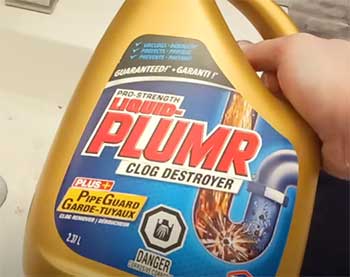
- Regular Strength: The standard formula for typical clogs
- Extra Strength: Doubled active ingredients for more severe clogs
- Foaming Pipe Snake: Clings to pipes and has an antimicrobial action
- Hair Clog Eliminator: Designed to dissolve hair and soap scum blockages
The active ingredients in Liquid-Plumr can corrode certain materials like aluminum over time with repeated use. Using the product sparingly can help minimize damage.
Liquid-Plumr is available at most major supermarkets, hardware stores, and online retailers like Amazon. Prices range from $4 for a small bottle of regular strength formula up to $20 for extra strength or speciality formulas.
Pros of Liquid-Plumr:
- Gel clings to pipe walls to unclog vertically
- Strong basic formula liquifies organic clogs
- Sanitizes drains
- Multiple formulas for different clog types
Cons of Liquid-Plumr:
- Can eventually corrode metal pipes like aluminum
- Strong chemical odor
- More expensive than some competitors
Drano Overview
Drano is manufactured by SC Johnson and first entered the market in 1923, making it the longest standing drain cleaner.
The original Drano formula contains sodium hydroxide and sodium nitrate. The sodium hydroxide saponifies fats and liquefies organic clogs, while the sodium nitrate serves as an oxidizing agent to help break down debris.
Most current Drano formulas also contain sodium chloride, or table salt, to help prevent the gel from hardening in pipes. Aluminum flakes are added to some varieties as an exothermic agent. The aluminum reacts with the sodium hydroxide in an exothermic reaction that releases heat to melt clogs.
Drano offers a wider range of product formulations than Liquid-Plumr:
- Original Formula: Sodium hydroxide based liquid
- Max Gel: Extra thick for vertical clogs
- Foamer: Clings to pipes with expanded foam
- Professional Strength: Doubled active ingredients
- Clog Remover: Focused on organic materials
- Hair Clog Eliminator: Removes hair and soap scum
- Septic Treatment: Maintains septic system drainage
- Crystal Clear: Deodorizes and prevents future clogs
- Dual-Force Foamer: Gel and foaming action
The different Drano types allow you to select the best one for your specific clog situation. The Max Gel is optimal for shower drains, while the Foamer sticks to sink pipes. The professional strength works on extreme clogs.
Drano can be purchased for $3 to $20 per treatment at any supermarket, hardware store, or online.
Pros of Drano:
- More versatility with 9 formulas
- Lower cost options available
- Excellent at removing organic clogs
- Safer for use on metal pipes
Cons of Drano:
- Chemical odor lingers after use
- Some versions may use aluminium which can produce noxious fumes
- Not as effective on hair or soap scum
Now that we’ve covered the key features and pros and cons of each drain cleaner brand, let’s compare them head to head.
An In-Depth Look At The Key Ingredients In Liquid-Plumr And Drano
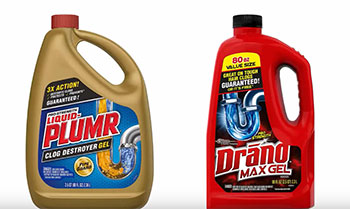
The active ingredients in Liquid-Plumr and Drano provide powerful chemical unclogging action.
But each brand uses somewhat different formulations to dissolve hair, soap scum, grease, food particles, and other gunk.
Liquid-Plumr Relies on Sodium Hydroxide and Aluminum
Liquid-Plumr contains two key active ingredients – sodium hydroxide and aluminum:
- Sodium Hydroxide
Also known as lye or caustic soda, sodium hydroxide is an extremely alkaline chemical compound. It breaks down oils, fats, proteins, and other organic compounds.
Sodium hydroxide dissolves hair, food scraps, soap buildup, and grease that get trapped in pipes. It reacts vigorously with water to produce heat and corrosion to penetrate clogs.
The high pH of sodium hydroxide allows it to damage tissues and cells. This chemical disintegration helps dissolve biological materials like hair, skin flakes, and residue from food prep that may be stuck in drains.
One downside is that sodium hydroxide can potentially corrode metal or plastic pipes with repeated exposure. This can wear away at plumbing over time.
- Aluminum
Liquid-Plumr contains small aluminum flakes or beads. When aluminum metal comes into contact with sodium hydroxide in water, a rapid chemical reaction occurs.
This reaction releases hydrogen gas, which forms bubbles that help dislodge stuck-on gunk lining pipe walls. The bubbling action provides physical force to complement the chemical corrosive effects.
Together, the sodium hydroxide and aluminum in Liquid-Plumr provide a two-pronged attack. The caustic base breaks down organic matter, while the mechanical bubbles loosen debris.
Drano’s Key Ingredients: Sodium Hydroxide, Aluminum, and Sodium Hypochlorite
Drano relies on some of the same key ingredients as Liquid-Plumr, along with one extra additive:
- Sodium Hydroxide
Like Liquid-Plumr, Drano contains sodium hydroxide to provide the powerful alkaline base that dissolves biological materials like hair, grease, and food particles. This caustic compound breaks down the bulk of clog-causing gunk.
- Aluminum
Drano also contains small pieces of aluminum metal that react with the sodium hydroxide to release hydrogen gas bubbles. This physical action works alongside the chemical dissolving effects.
- Sodium Hypochlorite
Here’s where Drano differs from Liquid-Plumr. Drano adds sodium hypochlorite, the active ingredient in bleach, to its formula.
Also known as chlorine bleach, sodium hypochlorite acts as a disinfectant and whitening agent. It helps dissolve and eliminate organic materials through chlorination, which is the process of adding chlorine to something.
Sodium hypochlorite provides extra grime-fighting power to complement the sodium hydroxide. It helps remove stains and disinfect buildup that may be causing drain clogs.
So in summary:
- Liquid-Plumr relies on sodium hydroxide and aluminum to clear drains through chemical decomposition and bubble agitation.
- Drano adds bleach via sodium hypochlorite for enhanced stain removal and whitening power.
Which brand has the better ingredients for busting through drain clogs?
Some plumbing experts argue the addition of bleach in Drano is unnecessary. Sodium hydroxide on its own effectively dissolves most organic clogs.
But others feel the bleach provides added cleaning power to break down stubborn buildup containing oils, fats, or grime.
Overall, both drain cleaners use a relatively similar approach of a caustic base plus a mechanical agitator. Liquid-Plumr offers a more streamlined formula, while Drano throws in bleach for extra strength.
Assessing the Effectiveness of Liquid-Plumr And Drano at Unclogging Drains
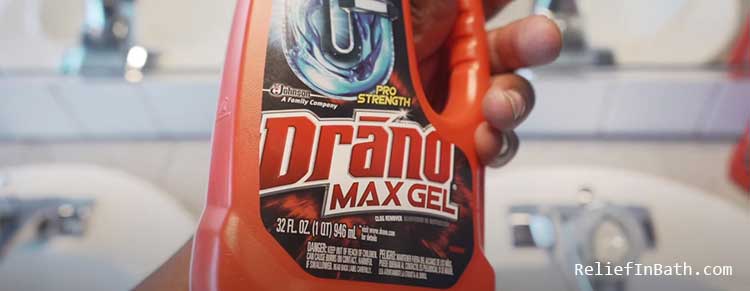
So those are the key ingredients. But how do Liquid-Plumr and Drano actually perform when it comes to dissolving drain clogs?
Both products can effectively tackle typical clogs caused by:
- Hair
- Soap scum from bathing or washing dishes
- Globs of grease and oil
- Food particles like coffee grounds
- Skin flakes and other biological debris
- Materials like cotton swabs or dental floss accidentally flushed down a drain
The combination of sodium hydroxide and aluminum provides substantial chemical and physical force to break down and dislodge these common household clogging culprits.
However, Liquid-Plumr may have a slight edge in potency:
- Liquid-Plumr’s Formula Remains Highly Caustic for Longer
Here’s one advantage of Liquid-Plumr over Drano – its formula retains maximum caustic properties for an extended period.
Liquid-Plumr claims its ingredients remain 100% active for over 24 hours after pouring into a drain. This allows the sodium hydroxide and aluminum longer working time to fully dissolve stubborn clogs.
By contrast, Drano starts losing its potency after just 15-30 minutes as the active ingredients get used up.
So for extreme drain clogs, Liquid-Plumr may have more cleaning power over time. Leaving the caustic soda in pipes for hours allows it to keep corroding and breaking down gunk long after application.
- Liquid-Plumr Claims 50% Faster Unclogging Than Drano
Product packaging and promotional materials for Liquid-Plumr boast that it works 50% faster than Drano to clear clogs.
The rationale is that Liquid-Plumr’s formula contains more pure sodium hydroxide than Drano after factoring in the addition of bleach. With higher alkalinity and causticity, Liquid-Plumr can eat through blockages quicker.
Testing by consumers generally supports this claim. Many note Liquid-Plumr generating rapid bubbling and gurgling soon after pouring it into a backed-up drain. The sounds indicate the fast chemical reaction of sodium hydroxide dissolving and loosening stuck-on gunk.
However, real-world experiences vary based on pipe configuration and the actual composition of clogs. In some cases, Drano performs just as quickly and effectively for routine sink or tub blockages.
- Liquid-Plumr Provides 50% More Caustic Sodium Hydroxide
Related to potency, Liquid-Plumr advertises its soda lye base as 50% more caustic than competing brands, including Drano.
With higher sodium hydroxide levels, Liquid-Plumr can deliver more corrosive power to dissolve thicker or tougher clogs.
The Max Build-Up Remover formula designed for extreme blockages contains 50% more sodium hydroxide still compared to regular Liquid-Plumr products. So for the worst clogs, this heavy-duty version may pack the most punch.
- Drano Offers Specialized Formulas Like Gel and Foam
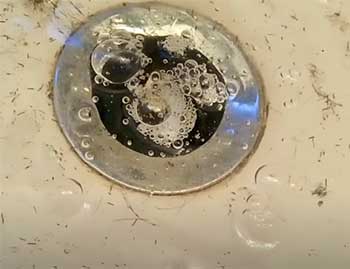
While Liquid-Plumr may edge out Drano in pure chemical unclogging power, Drano fights back with more versatility in application methods.
Drano offers their Max Gel formulation designed to cling to pipe walls rather than wash away quickly.
Users can squirt the thick gel upside down into overhead drains.
The gel consistency may allow for more targeted application onto specific clogged spots.
Another option is Drano Dual Force Foamer, which allows you to attach the bottle to a sink hose. When turned on, it sprays pressurized foam into clogged drains and pipes. The foam blankets the inner drain surfaces.
These specialized Drano formulas provide added convenience for targeting tricky clogs in otherwise hard-to-reach drains. Liquid-Plumr products mostly use a standard liquid consistency.
So while Liquid-Plumr may have an edge in sheer caustic power, the gel and foam varieties of Drano provide useful ways to direct the cleaner right onto clog weak spots.
- Neither Works Instantly on Severely Clogged or Calcified Drains
One downside of both Liquid-Plumr and Drano is they fail to provide instant results for the worst clog cases.
If pipes are fully blocked with years of accumulated minerals, grime, and scale (a process called calcification), neither cleaner can immediately blast through it.
Their sodium hydroxide formulas need extended working time to fully dissolve massive or lengthy clogs. Even their maximum-strength varieties may require repeated applications.
For this reason, Liquid-Plumr and Drano are better suited as preventative measures after minor clogs start, rather than fixing completely calcified drains. Calling a plumber for mechanical snaking may be required in those cases.
Safety Precautions When Using These Caustic Drain Cleaners
While chemical drain cleaners provide fast-acting solutions for clogs, take caution when using Liquid-Plumr or Drano:
- Skin Burns are Possible
Drano and Liquid-Plumr contain sodium hydroxide, an extremely caustic compound that can cause skin burns when mishandled. Gradually eating away skin tissue, sodium hydroxide burns require immediate flushing and medical attention. Wear protective gloves when using either cleaner.
- Eye Contact Can Cause Blindness
Getting Drano or Liquid-Plumr in the eyes may result in blindness or permanent eye damage. The chemicals quickly burn through eye membranes and tissues. Always wear goggles to protect your eyes when handling drain cleaner.
- Fumes Are Respiratory Irritants
The chemical vapors given off by these drain cleaners irritate lungs and airways. Use drain cleaners only in well-ventilated areas. Seek fresh air immediately if you experience coughing, choking, or breathing difficulty after inhaling fumes.
- Reactivity Dangers Exist
When sodium hydroxide makes contact with water, the reaction gives off heat and gases. Mixing it with other chemicals may cause dangerous splattering or toxic chlorine gas. Never combine drain cleaner with other products.
- Keep Away From Children and Pets
Drano and Liquid-Plumr pose poisoning risks for kids and animals who may accidentally ingest them. Always keep drain cleaners locked away securely, and handle with care to avoid spills. Seek emergency help immediately in case of accidental ingestion.
To prevent accidents when using Liquid-Plumr or Drano:
- Read all warning labels carefully.
- Work in a well-ventilated area. Avoid inhaling fumes.
- Wear protective gloves, goggles, and clothing to prevent skin or eye contact.
- Keep children and pets away from drain cleaners.
- Never mix with other chemical products.
- Clean up any spills thoroughly with water.
Exercising proper precautions allows you to take advantage of drain cleaners’ unclogging abilities safely. But take care to avoid direct contact or inhaling irritating vapors.
Comparing the Environmental Impact of Liquid-Plumr And Drano

In addition to safety concerns for people and pets, how do Liquid-Plumr and Drano impact the environment when poured down drains?
Unfortunately, neither cleaner meets eco-friendly standards:
- Sodium Hydroxide Harms Aquatic Life
The sodium hydroxide in both products alters pH to make water more alkaline. Discharged into lakes, rivers or oceans, sodium hydroxide solutions can harm fish and other aquatic organisms sensitive to pH changes.
- Bleach Disinfects Waterways
Drano’s added bleach ingredient, sodium hypochlorite, acts as a disinfectant. This can disrupt the natural microbial balance in bodies of water.
- Chemicals Damage Septic Systems
The caustic chemicals in Liquid-Plumr and Drano should never enter septic systems. They can decrease microbial action and corrode septic system infrastructure.
- Not Biodegradable
Neither drain cleaner contains plant-based or biodegradable ingredients. Their formulas do not break down through natural ecological processes.
- Can Contaminate Soil
Improper disposal or leakage into soils may lead to contamination. The high pH and chemical effects of ingredients like sodium hydroxide and bleach throw off soil chemistry and damage plants.
For these reasons, take care to minimize environmental release when using Liquid-Plumr or Drano:
- Never pour down septic system drains.
- Avoid outdoor drains connected to storm sewers.
- Wipe up any spills immediately with rags.
- Dispose of used drain cleaner carefully following local hazardous waste guidelines.
Consider choosing less toxic drain cleaners like enzyme-based products. And tackle clogs proactively by installing hair traps and avoiding putting grease down sinks.
Cost Breakdown: How Much Does Liquid-Plumr And Drano Cost?
Liquid-Plumr and Drano are competitively priced with each other for equivalent formulations:
- Base Prices
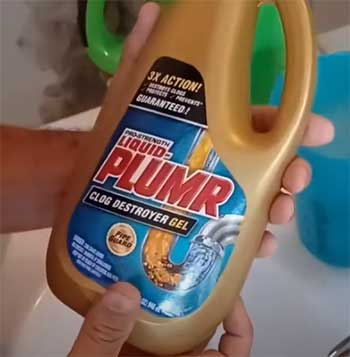
Basic 32 ounce bottles cost between $4-$8 for each brand.
The standard caustic drain opening formulas aimed at common sink or tub clogs come in around this price point.
For example, a 32 ounce bottle of Liquid-Plumr Clog Remover costs around $6 at most major retailers.
Similarly, a 32 ounce bottle of Drano Max Gel Clog Remover runs about $5.
Larger 1 gallon jugs around 128 ounces cost proportionally more in the $10-$15 range. You pay more upfront but get more cleaner for frequent use.
- Specialty Formulas
Both brands offer upgraded specialty formulas designed for more severe clogs. These extra-strength varieties cost a few dollars more:
- Liquid-Plumr Build-Up Remover – $8-$12 for 32 ounces
- Drano Professional Strength – $8-$15 for 32 ounces
- Drano Clog Remover Max Gel – $6-$10 for 40 ounces
So expect to spend $10-$15 for a container of either brand’s premium clog-fighting product. Shop around online and in stores for the best deals.
- Bulk Discount Savings
One way to save money on Liquid-Plumr or Drano is to buy multiple bottles at once. Some retailers offer discounts when purchasing 2-3 bottles as a bundle.
For example, Amazon sells a 3-pack of 32 ounce Drano Max Gel bottles for around $14. That breaks down to $4.50 per bottle, saving you a couple dollars compared to buying individually.
similar bulk discounts can yield 5-15% savings on Liquid-Plumr.
Ease of Use Comparison: Liquid-Plumr And Drano
Both Liquid-Plumr and Drano provide straightforward drain cleaning processes:
General Directions for Use:
- Remove any standing water from the clogged sink using a cup or towel.
- Remove sink strainer if needed to fully expose clogged drain opening.
- Measure out required amount of drain cleaner and pour directly into drain. For severe clogs, use maximum recommended amount.
- Allow cleaner to fully work for 15 minutes to hours depending on formula. Do not mix with any other chemicals.
- Flush drain with hot water to rinse away dissolved gunk.
- Repeat if needed for extremely stubborn clogs.
However, Drano offers some specialized formulas that may provide more convenience:
- Drano Gel Formula
Drano Max Gel clings directly to clogs and coats pipe walls without washing away quickly. The gel consistency makes it easy to apply upside-down in overhead drains. Some users find the gel gives more control.
- Drano Foaming Action
Drano Dual Force Foamer attaches to a sink hose, then sprays a pressurized foam into clogged drains when turned on. The foam helps the cleaner cling to pipes and penetrate blockages through the entire drain system.
By contrast, Liquid-Plumr comes as a standard thinner liquid. So Drano provides added variety and precision application for tricky clogs.
Speed Comparison: How Quickly Do Liquid-Plumr and Drano Work?
Liquid-Plumr and Drano both deliver fairly rapid results as far as chemical drain openers go. But Liquid-Plumr may take effect marginally faster.
- Drano
Drano claims its formula starts working within 15 minutes of pouring into a clogged drain. It promises to dissolve gunk and release trapped water.
However, customers note Drano takes longer to act on more extensive clogs involving large globs of hair or years of buildup. Severe cases may require overnight application.
- Liquid-Plumr
Liquid-Plumr advertises that users will see results within 10 minutes of use. The sodium hydroxide begins reacting immediately with water to break down clogs.
Many users confirm hearing gurgling noises within minutes as Liquid-Plumr’s fizzing action loosens debris. Its ability to maintain max causticity for 24+ hours allows it to keep attacking extreme clogs long after application.
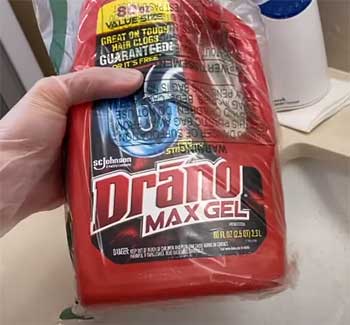
So Liquid-Plumr appears to have a slight edge in speed thanks to its more continuously powerful formula.
However, neither product yields instantaneous results on all clogs.
Severely calcified or compacted drain blockages may take hours or repeated applications before fully clearing.
Calling a professional plumber for mechanical drain snaking is the fastest solution for extreme clogging scenarios.
But for typical household clogs, Liquid-Plumr and Drano both work reasonably quickly. Liquid-Plumr’s more potent sodium hydroxide content may give it a leg up in both speed and efficacy.
Smell Comparison: Liquid-Plumr And Drano Fumes
A downside shared by both Liquid-Plumr and Drano is their unappealing chemical odor:
- Irritating Fumes
The sodium hydroxide and other caustic ingredients in these drain cleaners release harsh fumes. Many users describe the smell as overwhelming, nauseating, and irritating.
The vapors sting the eyes and irritate nasal passages. Some even compare the foul smell to rotten eggs or burning plastic.
Those sensitive to odors may find both Liquid-Plumr and Drano difficult to tolerate. The chemicals can permeate bathrooms with a harsh stench.
- Lingering Smell
To make matters worse, the noxious fumes seem to linger in the air long after use.
Even hours later, some users report catching whiffs of the distinctive chemical smell. The odor clings to surfaces, pipes, and porcelain fixtures.
- Liquid-Plumr May Smell Stronger
Liquid-Plumr contains higher sodium hydroxide levels than Drano, which may make its vapors slightly more pungent.
The pure caustic soda smell stands out. But Drano’s bleach ingredient also gives off an irritating chlorine odor.
No matter which brand you choose, expect an aggressive chemical smell during and after drain cleaning. Pipe configuration and ventilation will impact how intensely it lingers.
Tips to Manage Odors
To help dissipate smells from Liquid-Plumr or Drano:
- Work in a well-ventilated area or near an open window.
- Place ventilation pads under sink or shower drain.
- Light candles or spray air freshener to mask the smell after use.
- Run bath fans or ventilation systems to circulate air.
So in summary, both drain cleaners pack a potent odor punch. But Liquid-Plumr may have marginally stronger fumes due to higher alkalinity. Be prepared for an unpleasant smell or work in areas that allow for maximum airflow.
Customer Reviews: Real-World Liquid-Plumr And Drano Feedback
To gauge real-world performance, customer reviews provide useful insights into Liquid-Plumr and Drano’s drain cleaning abilities.
- Drano Reviews
Overall, Drano earns very positive reviews, with most customers praising its ability to power through bathroom sink or tub clogs. They report satisfying gurgling sounds as Drano goes to work dissolving gunk within minutes.
The added tools like foaming spray nozzles make application convenient.
Negative Drano reviews mention challenges fully clearing years of accumulated buildup in aging pipes. A single use often isn’t enough for severe clogs. And the terrible chemical smell also earns complaints.
- Liquid-Plumr Reviews
Liquid-Plumr garners similarly positive feedback. Customers say it outperforms Drano based on its rapid bubble action and lasting high-causticity formula. Many tried Drano first without success but had better results from Liquid-Plumr.
They appreciate that it remains active for hours to keep eating away tough clogs long after application. Negative reviews cite difficulty fully clearing main sewer drain clogs and the long-lingering chemical odor.
Key Takeaways
In summary, customer reviews indicate:
- Both cleaners work well for minor to moderate household drain clogs.
- Liquid-Plumr may have an edge for tough clogs thanks to higher sodium hydroxide levels.
- Specialized Drano gel and foaming formulas provide added convenience.
- Neither fully clears severe main line sewer clogs in one use.
- The noxious chemical fumes bother some users.
Overall, Liquid-Plumr and Drano earn recommendations as fast shortcuts for clearing everyday clogs. But severe plumbing issues may require a professional plumber rather than chemical cleaner alone.
Frequently Asked Questions (FAQ)
Plumbers generally advise against chemical drain cleaners like Drano because they can damage pipes when used improperly or excessively. Drano is powerfully caustic and corrosive, so pouring it down drains repeatedly can wear away at metal or plastic pipes and joints. This can lead to leaks or deterioration over time.
Plumbers have the same cautions about Liquid Plumber as Drano when it comes to pipe corrosion. Liquid Plumber contains very caustic ingredients meant to dissolve clogs, but improper use can wear down drain infrastructure. Most plumbers recommend limiting use of chemical drain cleaners and relying on mechanical methods instead.
For a safer and more environmentally method, many plumbers recommend enzyme drain cleaners over caustic chemicals. Enzyme liquids like Affresh and Green Gobbler use bacteria to digest organic matter clogging drains. They are non-toxic and won’t corrode pipes with repeated use.
Plumbers suggest using a mechanical drain snake before trying chemical drain cleaners. A metal snake physically pushes through gunk and clears clogs without damaging pipes. For prevention, install strainers to catch hair and food. And flush drains regularly with boiling water. Avoid putting fat or grease down drains.
Liquid-Plumr is more powerful at dissolving severe clogs quickly, while Drano offers more versatility and is gentler on plumbing systems. For mild household clogs, either option will work well – go with Liquid-Plumr for stronger cleaning or Drano to prevent pipe corrosion over time.
Liquid-Plumr is very effective but the higher concentration of harsh caustic ingredients makes it more prone to corroding pipes with repeated use. Using it sparingly minimizes the risks. For metal pipes, Drano is the safer option for regular use.
Final Verdict
In this comprehensive comparison, is there a clear winner between Liquid-Plumr and Drano?
While both can tackle basic sink and tub clogs, Liquid-Plumr has a slight performance edge thanks to its higher sodium hydroxide concentration. This allows it to remain maximally caustic for longer to fully dissolve blockages over hours.
But Drano offers helpful specialized formulas like thick gels and foaming sprays for added convenience in application.
Either brand requires equally vigilant safety precautions due to their harsh chemicals that can damage skin, eyes, lungs, and the environment. Follow all usage directions carefully and never mix products.
For severe plumbing clogs, neither product provides a miracle instant fix. And their powerful odors bother some users.
At the end of the day, Liquid-Plumr and Drano both serve a helpful role as temporary clog relievers in a pinch. But take care to use them properly within their limitations.
For maintenance cleaning, try enzyme drain cleaners instead. And for professional-grade drain and pipe servicing, call a licensed plumber for the best results.
With Liquid-Plumr vs Drano, choosing either brand lets you combat minor clogged drains quickly when used carefully according to directions. Just weigh your specific needs and plumbing configuration to pick the best fit.
